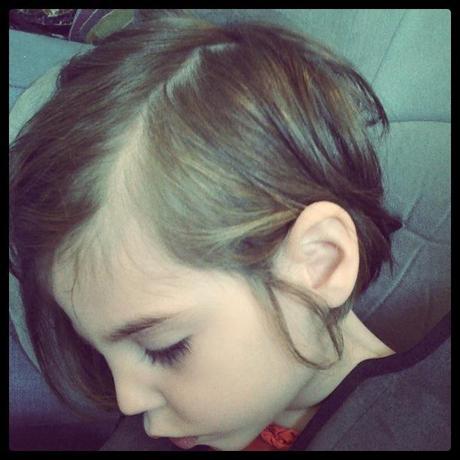 In my callous twenties, I used to wonder if genetic beauty peaked like a mountain with each successive generation. Was it possible for somebody to be so utterly beautiful that rather than surpass them, their offspring’s looks began a descent from the peak? Was there a natural spring of beauty that dwindled with each child and eventually dried up?
In my callous twenties, I used to wonder if genetic beauty peaked like a mountain with each successive generation. Was it possible for somebody to be so utterly beautiful that rather than surpass them, their offspring’s looks began a descent from the peak? Was there a natural spring of beauty that dwindled with each child and eventually dried up?
Note the operative word, ‘callous.’ At that age I was considering beauty in terms of pure surface aesthetics. But I hadn’t lived yet. I hadn’t reached the stage where I discovered that beauty is more than skin deep.
Of course, today I still get as much pleasure out of beautiful things as the next person. I love the house where we live, not least because of its breathtaking location, placed in a local Area of Outstanding Natural Beauty as it is. I get excited by the sight of fine craftmanship in V&A’s temporary exhibitions – Yohji Yamamoto’s 2011 retrospective being one example – hand-embroidered and beaded bags, and of course the exquisite architecture that is prevalent in cities like Oxford, Prague or Bruges.
And there is Isobel herself. Biased though I am as her mother, I know I’m not deluded in saying how amazing I think she looks. If the full range of beauty is a mountain, then she has to be its peak. Upon meeting her, people are so stunned by her looks that the very word they use to compliment her – ‘beautiful’ – becomes meaningless.
Isobel has microcephaly. Right now you wouldn’t be able to tell because a. of her abundant head of hair, and b. she’s of petite build anyway – an outcome of having GDD and CP as well as microcephaly, both of which impact on motor development and therefore energy levels, appetite, circulation and overall growth.
Eventually, though, I am sure that it will show.
‘You’re just worried about how it looks,’ someone once said to me, as if I was that superficial. But it’s not just about how it will look – it’s also about the social implications. A 2008 Changing Faces survey showed that 9 out of 10 people unwittingly judged those who have disfigurements to be less attractive, less likely to succeed and less easy to work with. So how would someone with an exceptionally small head be perceived?
I’d love to be able to say that it won’t matter because Isobel will still have that incredible face. Sadly, in a society as image-obsessed as ours, I am almost certain it will. The older Isobel gets, the more others are going to notice the size of her head, almost as soon as they begin to admire her face.
At least I am priming myself for that possibility, just like I am priming myself for my own aging as I go through life. Learning to adapt to an inevitability is far healthier in the long run than trying to fight it. It is a little like embracing the emergent smattering of gray in your hair; once you do, you avoid the trap of obsessing over your roots in your 60s.
I am loathe to say that looks don’t matter, and that it’s what’s on the inside that counts. That would imply there’s not much to look at on the outside, which I don’t agree with.
Just like nature itself, beauty is neither finite nor consistent. Most people change as they get older, and some will blossom while others wilt. Ultimately, I don’t think it matters how old you are, because the effects of your general outlook based on individual life experiences, rather than your age, are what will eventually show on your face – and it is this that I believe determines real beauty. There’s nothing wrong with caring for your appearance, but it shouldn’t outweigh what’s more important in life: looking out for others as well as yourself.
I am very, very lucky that Isobel has a beautiful personality as well as a beautiful appearance. She has a knack for seducing people with her own warm and happy-go-lucky demeanour. She is so easy to get on with – and often so ready with a smile, or even better, a laugh – that she is almost guaranteed to charm the pants off you on first encounter.
I intend to encourage Isobel to build on this aspect of her character, so that she maintains her seductive pull regardless of the physical changes her body will undergo as her disabilities become more pronounced. It’s so vital – not just for her social life and self-esteem, but also for her own protection.

